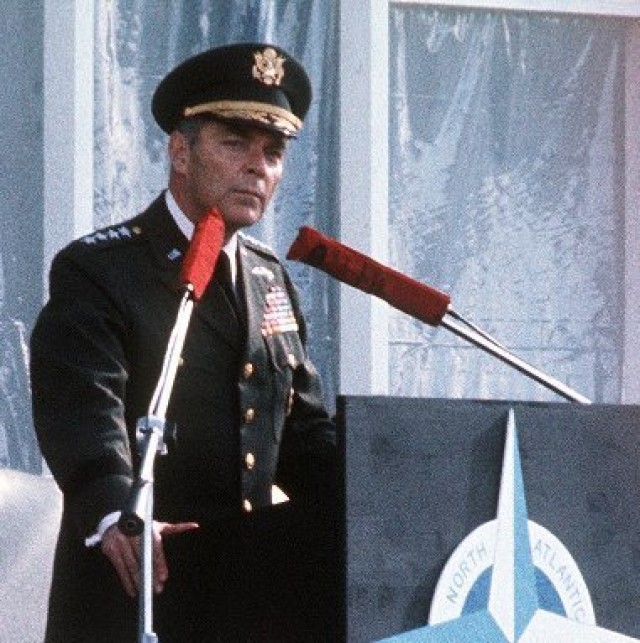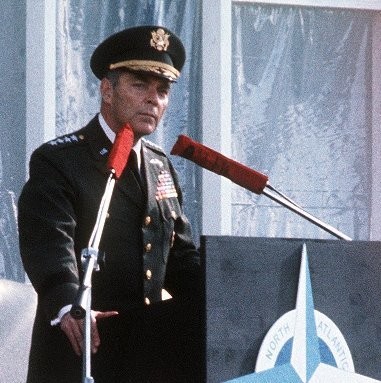WASHINGTON (Army News Service, March 2, 2010) -- The Army mourned the loss of a decorated four-star general turned statesman March 2 as Gen. Alexander Haig was laid to rest at Arlington National Cemetery.
Haig, who served as the U.S. secretary of state under President Ronald Reagan and the White House chief of staff under presidents Richard Nixon and Gerald Ford, died Feb. 20 at the age of 85.
In a statement following the announcement of Haig's death, President Barack Obama expressed his gratitude for Haig's service to the country, calling Haig "a great American who served our country with distinction."
"General Haig exemplified our finest warrior-diplomat tradition of those who dedicate their lives to public service," Obama said.
Army Chief of Staff Gen. George W. Casey Jr. echoed the president's appreciation for the Army officer turned public servant.
"Our Army family has lost a great Soldier and statesman who selflessly devoted his life's work to the service of our nation," Casey said. "We honor General Haig for his most distinguished service, and will always remember him as the Soldier who -- when the nation called -- never failed to answer."
Haig's Army service spanned more than three decades. As a Soldier, he served in the Korean and Vietnam wars. Later, Haig served as the Army vice chief of staff, from where he helped lead efforts in the transition to an all-volunteer force.
Haig began his military career at the United States Military Academy at West Point, N.Y. After graduating in 1947, he was stationed in Japan where he served on the staff of Gen. Douglas MacArthur. It was also in Japan that he met his wife, Patricia Fox.
In the years that followed, Haig advanced through the ranks, serving at the Pentagon as the military assistant to both the secretaries of the Army and defense. He served combat tours in both Korea and Vietnam, and was named regimental commander of the third regiment of the Corps of Cadets at West Point.
In the late 1960s, Haig was asked to serve as the military adviser on the National Security Council under President Richard Nixon, and later as the White House chief of staff.
Haig's final positions in the Army included serving as the seventh Supreme Allied Commander in Europe, commander of NATO forces in Europe, and Commander in Chief of United States European Command. Shortly before retiring in 1979, Haig survived an assignation attempt in Mons, Belgium.
Adm. James Stavridis, commander, U.S. European Command and Supreme Allied Commander Europe, remembered Haig in a recent posting to his blog.
"I met General Haig several times in the course of my career, and he was sharply intelligent, decisive in his opinions, and deeply grounded in U.S. European relations," Stavridis wrote. "He will be missed by all who served with him and remember him today in the NATO alliance."
Throughout his career, Haig was awarded the Presidential Service Badge; Distinguished Service Cross; the Army Distinguished Service Medal; Silver Star with oak leaf cluster; Legion of Merit with two oak leaf clusters; Distinguished Flying Cross with two oak leaf clusters; Bronze Star with valor and two oak leaf clusters; and the Purple Heart.
Haig is survived by his wife Patricia Fox Haig; his children: Alexander P. Haig, Brian F. Haig, Barbara E. Haig; and eight grandchildren.


Social Sharing